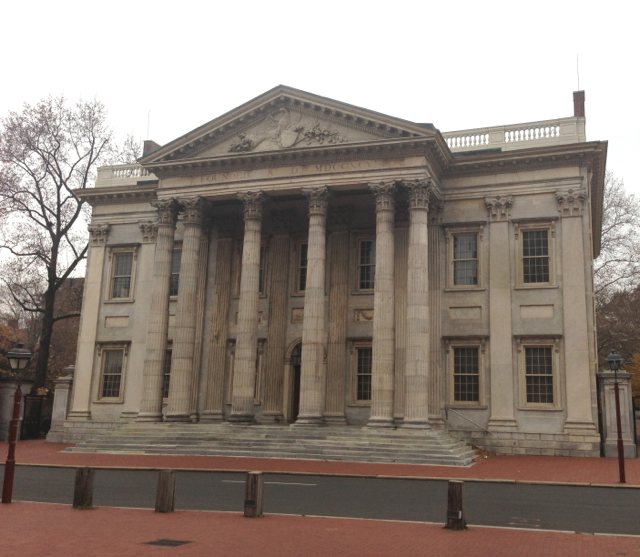I met James Gray, owner of Flexcoin, a website posing as “the bitcoin bank”, just before Christmas last year. We crossed paths at Remedy Cafe where a local TV crew was interviewing me for a piece about a local gold dealer opening its doors to bitcoin customers as well, becoming the first bricks-and-mortar brokerage in town. Rightly or wrongly, and not unlike some Thomson Reuters lady earlier today, the local TV people figured that I knew something about Bitcoin and wanted my input. James, coincidentally, happened to be at the cafe at the same time as the TV crew and I because his nearby office at Telus, a telecommunication provider, where he works in IT something or other, was experiencing a power outage and James had some time to kill. So why not go to Remedy Cafe, where he can spend his BTC?
So there we met. After my interview (and James’ serendipitous camera time), we chatted a bit and he mentioned that he charged his customers transaction costs of 0.01 BTC at a time when BTC was CAD $700 per. This seemed like lunacy, as did the notion that a wallet service with thousands or tens of thousands of customer coins had zip/zilch/zero employees and its owner was spending far more time doing mid-level IT drudgery and watching Blues Clues reruns with his kid than biznass. James, incidentally, claimed to have been involved with Bitcoin since 2009 and should’ve known better. I mean really.
Needless to say, I wasn’t hugely surprised when he posted the following on his website 3 days ago:
Flexcoin is shutting down. On March 2nd 2014 Flexcoin was attacked and robbed of all coins in the hot wallet. The attacker made off with 896 BTC, dividing them into these two addresses: 1NDkevapt4SWYFEmquCDBSf7DLMTNVggdu 1QFcC5JitGwpFKqRDd9QNH3eGN56dCNgy6 As Flexcoin does not have the resources, assets, or otherwise to come back from this loss, we are closing our doors immediately.
For a bank, 896 BTC is not an inconsequential amount to keep in a hot wallet. Probably more than the 2% he’d realistically need. Then again, maybe it was only 2% and there really are that many Bitcoiners crazy and lazy enough to trust an unverified third party. Is cold storage that complicated? I’m not saying it’s easy, just that it’s fucking worth it. Of course, James did his due diligence after the horses had escaped and went to file a police report with the EPS. Because obviously.
Bitcoin isn’t a scam, and perhaps Flexcoin wasn’t intentionally so either, but neither was Flexcoin legitimate and trustworthy. In the good ol’ days, when people were rightly skeptical of things calling themselves “banks”, institutions pretending to be such went to great expense to erect grandiose buildings in the Early Classical and Greek Revival styles, like the First Bank of the United States in Philadelphia, seen below, which I visited last November. The First Bank looks like it’ll last 1000 years, which is precisely the point. They wanted to demonstrate a level of authority, a necessary prerequisite for playing with other people’s money. It was the only way to earn people’s trust. Or at least it used to be.
Then came the Internet and untold billions of easy bucks for anyone with a WordPress template. Flexcoin neither looked exceptionally appealing nor exceptionally outdated. It just looked plain forgettable. Websites in the bitcoin space are not masterpieces of Early Classical Revival architecture. They’re ticky tacky houses made of two-by-fours and a few coats of paint. You’d be well advised to treat them as such until proven otherwise. As it stands, the least slick website in Bitcoin is the most legitimate – that’d be MPEx. Take that in your irony pipe and smoke it.
Summary of Today’s Lesson: Play smart and beware the wallet inspector, lads. Your ancestors certainly did.
[Photo credit: author]


[…] technical hurdles in simply securing a wallet and continual butthurt of those who fail to do so indicates […]
[…] that can be wholly energizing, intoxicating, and invigorating, but as is far too often the case, taken advantage of. Intentionally. A frequent point of idealism, despite chants of “DECENTRALIZE DA WURLD” […]
[…] stores user info and private keys unencrypted in plain text on its servers, making OmniWallet a Flexcoin waiting to happen. […]
[…] supporting a frieze-bearing entablature and a triangular pediment, not unlike what you find on the First Bank of the United States in Philadelphia. I was fortunate enough to catch the opening night of the 2014/15 Opera season featuring La […]
[…] bitcoins to Wences and his team at Xapo ? Not like this is the new Wild West or anything, where early classical revival websites pretend to be Fort Knox one day only to disappear under the cover of darkness haxxing the next. Not […]
[…] of permissionless innovation – the fiat equivalent of Circle, Blockchain.info, Ethereum, and Flexcoin, among many others. This is what permissionless innovation looks like whether it’s in fiat or […]
[…] to design train stations in the Greco-Roman Revivalist manner, it’s quite another to design websites thusly. […]
[…] export-oriented economic strategy – including the establishment of the First Bank of the United States – was not only effective in nurturing the nascent US but was also copycatted during the […]
[…] Matters of Merchant Adoption 2. The Wallet Inspector’s Promise 3. Early Classical Revival Websites Do Not A Bitcoin Bank Make 4. Citizens of Fiat vs. Citizens of Bitcoin: A Contrast 5. On Delusions Of Digital Security […]
[…] retail, commercial, residential uses. Combined with a very temperate climate and a sturdy stock of Greco-Roman Revival architecture and voila! an American city with European levels of liveability and liveliness year-round! […]